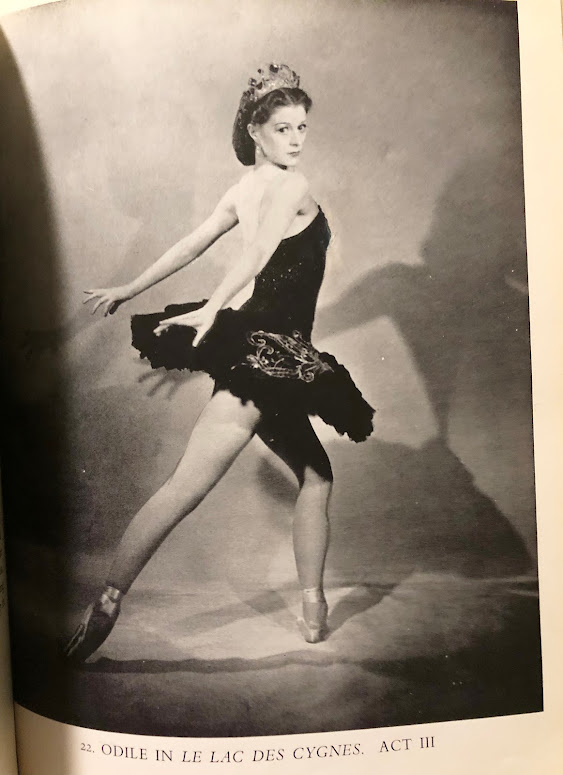Moira Shearer's Struggle With Perfectionism
 |
| Photo Credit: Moira Shearer as Odile in Swan Lake Act III from Moira Shearer Portrait Of A Dancer by Pigeon Crowle |
Moria Shearer, just like Margot Fonteyn and Anna Pavlova, struggled with perfectionism. Shearer put a lot of pressure on herself to be a great ballerina, and when others applauded her or complimented her for her dancing, she would not see that she would instead see that it could have been better, which shocked a lot of people. She wanted an utterly flawless performance which caused her mental strain and stress from demanding much of herself. Still, she always was that way even at a young age, and since she was successful at a young age at her dancing, she was very critical of herself even more as an adult because the stakes were higher for the roles she wanted to play.
One example was when Shearer was dancing the role of Odette and Odile critics raved about it calling her performance with Robert Helpmann "One of the most beautiful artistic experiences in ballet and her portrayal has exerted a profound influence on younger dancers, as Moira Shearer is the first to acknowledge."
The Critics called Moira Shearer in her role of Odette and Odile half-bird half-angel and applauded her for her take on the role, but despite all this enthusiasm and compliments, Shearer herself did not feel the same way. She remembered her first role, disappointed with her performance and her failure to achieve perfectionism.This ideal image she was aiming for was like a hungry ghost. The hungry ghost never seemed like it was fed. It always seemed like it was hungry. Her inner critic was never satisfied by what she did no matter how well she danced; it was never good enough in her eyes. She was not trying to please the audience or the press but herself and her inner critic, but the fact of the matter is the harshest critic wasn't the ballet critics. It was herself.
One critic of the New York Times even noticed this in one of her performances discussed here."Her fair colouring and a certain softness of gesture and expression made her a Swan Queen who was "half angel and half bird". All through her impersonation of Odette she maintained this attitude, at once tender and aloof; when she came to Odile she relaxed her facial expression and assumed a more glittering brilliance. Her actual dancing was assured enough to convey her dramatic conceptions, the adagio with her partner in the second act being particularly beautiful as well as expressive, through the solo that followed it was not so carefree."- Quote from the New York Times
Even though Moria Shearer struggled with perfectionism, she still fulfilled her tasks, danced the roles she always wanted and gave the roles her all. Maybe still not to the level of perfection she wanted. Still, bringing her artistry to the role created a new experience for the character she was dancing as. It made you feel like you were meeting the character for the first time. The audience enjoyed her performance, and that is an accomplishment in itself and should be celebrated, not ridiculed. Moira Shearer was a true artist, and she spoke with her artistry, technique, and passion for dance like so many before her, but she didn't want to fill the shoes of the other famous ballerinas she admired. She wanted to be known as the Dancer Moria Shearer.



Comments
Post a Comment